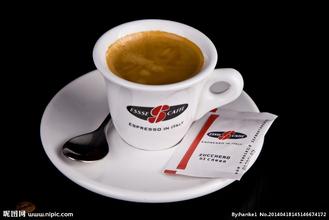Dominica Santo Domingo Coffee Flavor description Grinding characteristics introduction to the taste of varieties in producing areas
The earliest coffee in Dominica was introduced from Martinique (French overseas department), dating back to the early 18th century. Dominica is an island country with a tropical climate. The annual temperature does not change much. Except for the middle Cordillera mountain area, where the temperature is relatively low and can reach below 0℃ in winter, the annual average temperature in other areas is between 25 and 30℃. However, due to the influence of mountain terrain, the north and east face the northeast trade wind, and the annual precipitation reaches 1500-2500 mm. It belongs to a tropical marine climate. Mountain forest dense, leeward southwest annual precipitation of 500-1000 mm, longer dry season, a tropical savanna climate.
Dominica's mild climate is conducive to coffee cultivation, and the best production areas for coffee are the Barahona region in the southwest and the Cibao Valley in the interior north of Santiago, Dominica's second largest city. The northern region, represented by Ciba, and the southern region, including Ocayabani Santo Domingo, produce fine coffee. Among them, Santo Domingo and Bani produced coffee world-famous, almost synonymous with Domica coffee
Kadura species are increasing.
After the 1998 hurricane, which caused numerous losses, the Kadura species, which had lower tree heights and higher harvests, began to be planted widely. Barahona still has tibica coffee, but the harvest is drastically reduced by the annual hurricane.
Cultivation
Climatic conditions are the same as in the highlands.
Dominica's climatic conditions are similar to those of the higher elevations of Central America. Harvesting begins in September at low altitudes, and in February to April of the following year at altitudes of 600 to 1500m. Most of them are washed with water.

Important Notice :
前街咖啡 FrontStreet Coffee has moved to new addredd:
FrontStreet Coffee Address: 315,Donghua East Road,GuangZhou
Tel:020 38364473
- Prev

Panama Cassah Coffee Flavor Description Grind Characteristics Variety Treatment Taste Introduction
Roasted ripe beans look wrinkled. These sexy wrinkles are meant to highlight their original flavor and acidity, but if the raw beans themselves are not of high quality, they will give off some miscellaneous flavors, such as rotten earthy, grassy and dry flavors, which should be avoided by roasters. Roasted roses have charming lemon citrus aromas and super sweet honey cream flowers.
- Next

Yunnan Iron Card Coffee Grind Treatment Taste Characteristics Variety Production Area Fine Coffee Bean Flavor Description
The west and south of Yunnan Province are located between N 15 and Tropic of Cancer, most of which are 1000-2000 meters above sea level. The terrain is mainly mountainous and sloping. Here fertile land, abundant sunshine, abundant rainfall, temperature difference between day and night, unique natural conditions formed the special taste of Yunnan Arabica coffee thick but not bitter, fragrant but not strong, slightly fruity. Pu 'er in southern and western Yunnan
Related
- Detailed explanation of Jadeite planting Land in Panamanian Jadeite Manor introduction to the grading system of Jadeite competitive bidding, Red bid, Green bid and Rose Summer
- Story of Coffee planting in Brenka region of Costa Rica Stonehenge Manor anaerobic heavy honey treatment of flavor mouth
- What's on the barrel of Blue Mountain Coffee beans?
- Can American coffee also pull flowers? How to use hot American style to pull out a good-looking pattern?
- Can you make a cold extract with coffee beans? What is the right proportion for cold-extracted coffee formula?
- Indonesian PWN Gold Mandrine Coffee Origin Features Flavor How to Chong? Mandolin coffee is American.
- A brief introduction to the flavor characteristics of Brazilian yellow bourbon coffee beans
- What is the effect of different water quality on the flavor of cold-extracted coffee? What kind of water is best for brewing coffee?
- Why do you think of Rose Summer whenever you mention Panamanian coffee?
- Introduction to the characteristics of authentic blue mountain coffee bean producing areas? What is the CIB Coffee Authority in Jamaica?

